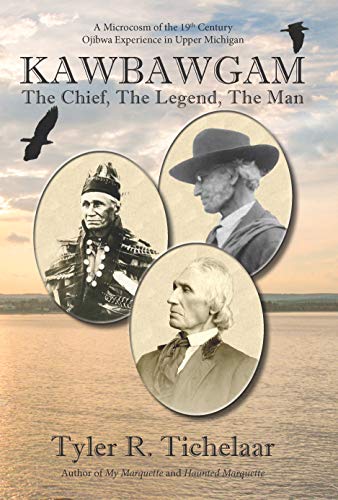Kawbawgam: The Chief, The Legend, The Man
By Tyler Tichelaar
Today, Charles Kawbawgam, “The Last Chief of the Chippewa,” is a legend in Michigan’s Upper Peninsula for allegedly living to age 103 (1799-1902). But few know anything else about him beyond his being buried in Marquette’s beautiful Presque Isle Park.
Kawbawgam witnessed a period of intense industrial growth and unheralded change for Native Americans. Growing up at Sault Sainte Marie when the area was still claimed by Great Britain, his first memory was of armed Americans coercing his people into ceding their lands to the United States Government. As the son, nephew, stepson, and later son-in-law of Ojibwa chiefs, and in time a chief in his own right, Kawbawgam learned early that he would have to walk a fine line to keep the peace for his people. After temporarily migrating to Canada with other Ojibwa in disagreement with the American government, he returned to the Sault where he was recruited to help found the town of Marquette.
Kawbawgam would preside over an Ojibwa and métis community that helped ensure the white settlers’ survival during Marquette’s early years, only to be pushed to the city’s margins as Marquette grew and prospered. Yet the admiration and affection Kawbawgam won from whites as well as the Ojibwa maintained peace and created a legacy that lives on today. Kawbawgam is a story of cross-cultural friendships, survival amid upheaval, and the importance of community and heritage.




